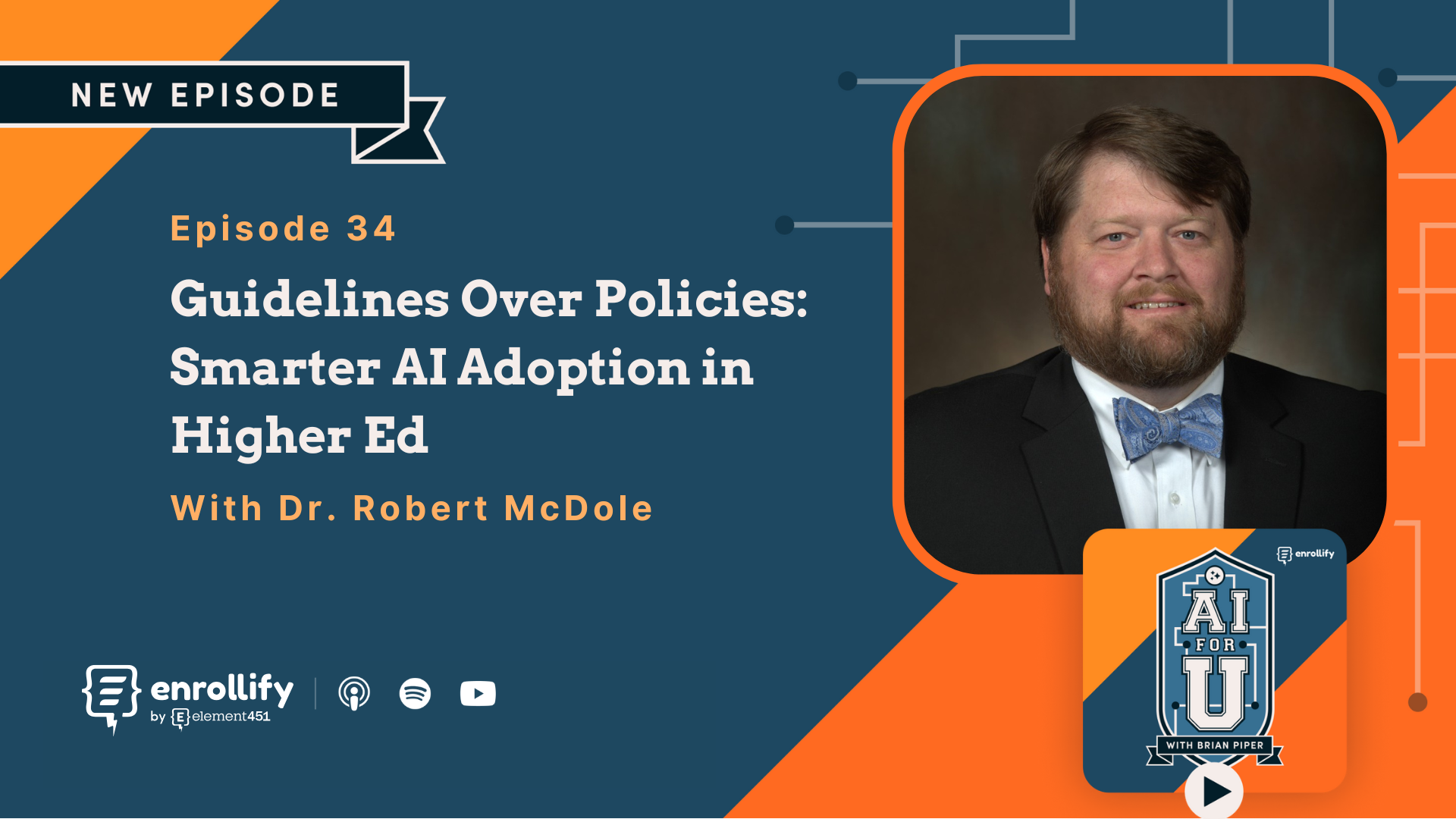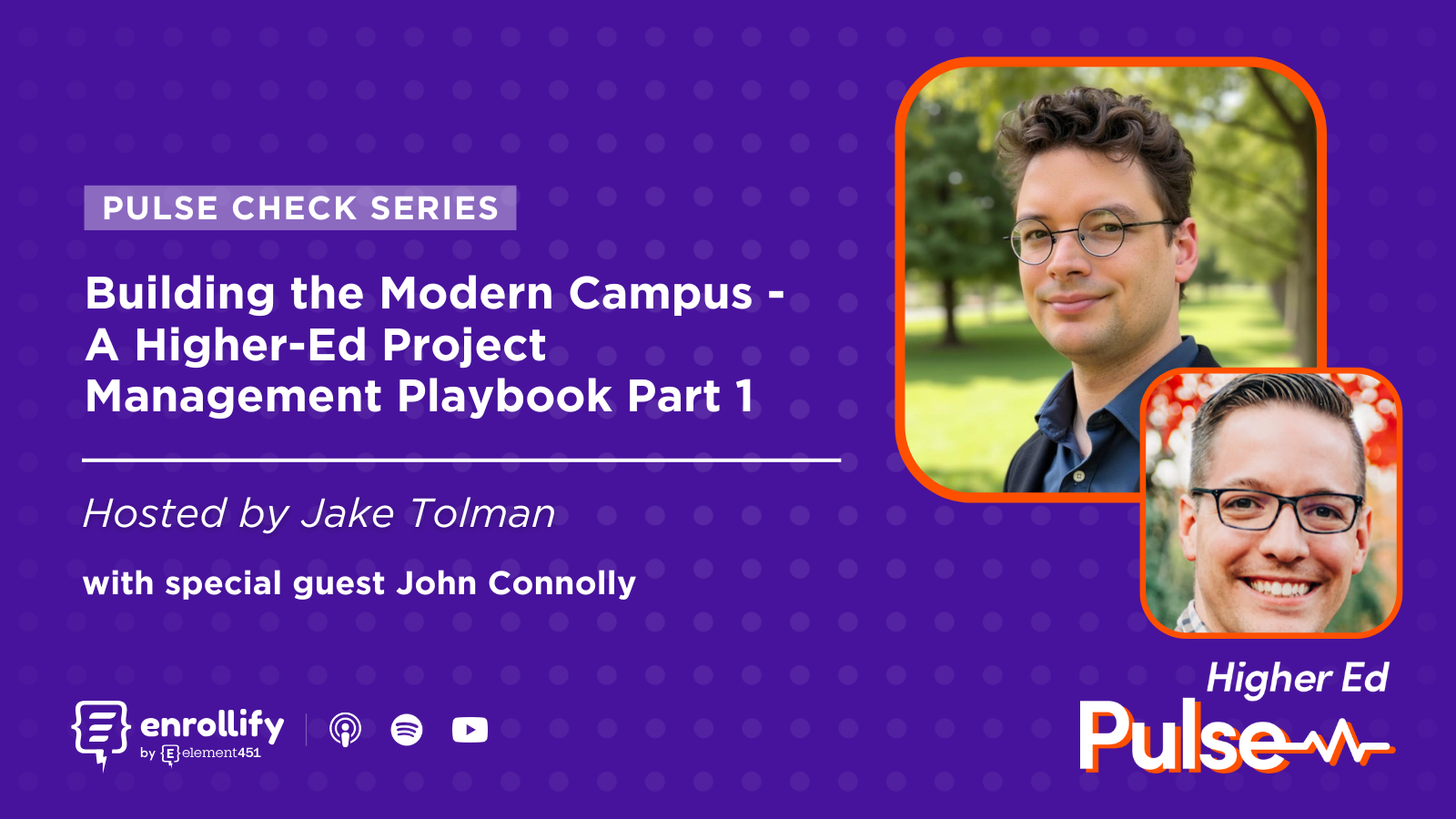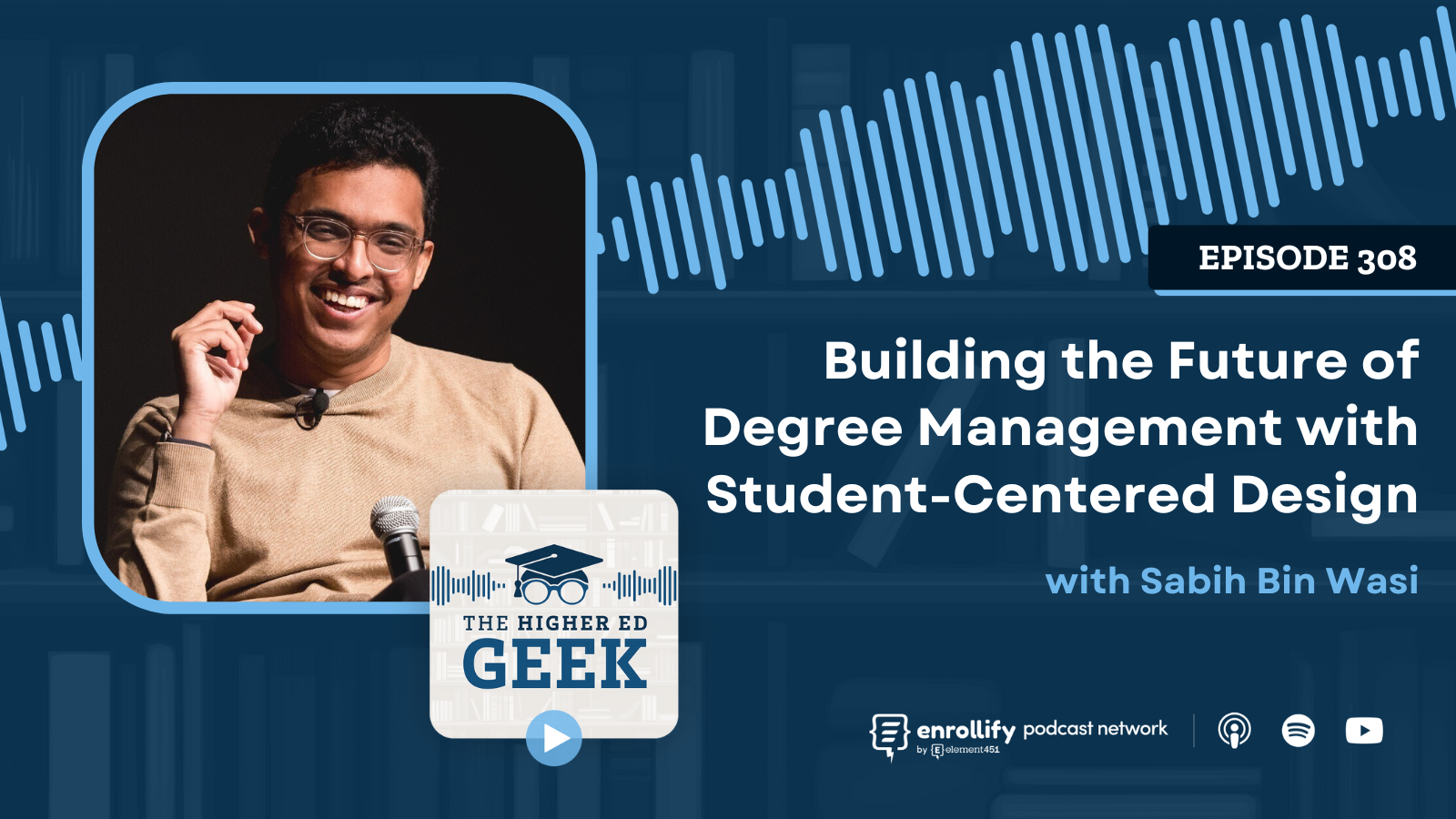About the Episode
Got a story to tell? An innovative idea to share? Fill out our guest nomination form and let's chat!
About the Episode:
Jeremy Tiers chats with Hannah Downey, Social Media Strategist at the University of Wyoming, about how the institution is making social media a core part of its admissions strategy. With Gen Z living on platforms like Instagram, TikTok, and YouTube, Hannah explains how aligning social content with recruitment goals is not just smart—it’s essential. This episode is packed with actionable insights for higher ed marketers looking to build community, create two-way conversations, and push the boundaries of traditional outreach.
Key Takeaways
- Social media offers a real-time, two-way communication channel that traditional admissions methods often lack.
- Prospective students—especially Gen Z—use social platforms like search engines when researching colleges.
- Aligning print, email, and social media creates a unified student experience across touchpoints.
- Content that performs well includes student-generated posts, admissions FAQs, and “day-in-the-life” stories.
- Building a strong social presence doesn’t require a massive team or budget—authenticity and consistency matter most.
- Social media trends can be adapted to campus messaging, but knowing your platform and audience is key.
- Evaluating performance through metrics like engagement rate and link clicks is crucial to improving over time.
Episode Summary: Social Media Strategies That Actually Work in Student Recruitment
Why is Social Media a Missed Opportunity in Admissions?
Hannah Downey opens the conversation by calling out a major blind spot: too many institutions treat social media and admissions as separate strategies. But for Gen Z students—who spend hours daily on Instagram, TikTok, and YouTube—these platforms are where community happens and decisions begin. By not being active and engaging on social media, schools miss the chance to build real-time connections in a space students already trust and use.
Hannah explains that social isn’t just another broadcast channel. It’s a hub for two-way communication. Students frequently DM the university with questions, especially international students unfamiliar with the U.S. college admissions process. Social media becomes the front door to the admissions office—answering FAQs, clarifying next steps, and celebrating big moments like admission decisions and enrollment confirmations. Without a strong presence there, schools lose that early and emotional engagement.
How Did Wyoming Build Collaboration Between Social Media and Admissions?
When Hannah joined the University of Wyoming as a student intern in 2020, there was no dedicated social media strategy. So she built one. Starting with a blank slate, she prioritized content that would have helped her during the college search process—using social as a recruitment tool, not just a brand megaphone.
She embedded herself in admissions and marketing meetings, learning the process inside and out so she could align her posts with what was being sent via email, text, and print. Over time, she earned the trust of campus leadership and admissions staff, and the university's messaging evolved into one seamless voice across platforms. That alignment helps prospective students feel consistency in messaging—from Instagram Story to postcard.
Importantly, she didn’t go it alone. The admissions team regularly sends her ideas, trends, and even helps execute campaigns. Current students, affectionately dubbed “TikTerns,” are also heavily involved in content creation. This collaborative model ensures the content is both strategic and authentic—two things Gen Z cares deeply about.
What Kind of Content Resonates with Prospective Students?
If there’s one truth in higher education content marketing, it’s this: students want to see real life. Hannah says the most popular content on their social platforms includes residence hall tours, student-led campus tours, and behind-the-scenes peeks at campus life. Even posts about new building construction or quirky campus events can signal to students, “you’ll fit in here.”
Hannah’s team uses content pillars to stay organized and consistent—posting about admissions once a week and layering in student life, academics, and campus culture on other days. Trends from TikTok and Instagram Reels are adapted with a Wyoming flair, and the team evaluates content performance weekly based on metrics like reach, impressions, link clicks, and engagement rate. A recent cycle saw a 6.2% engagement rate—double the industry average.
Her philosophy? All content is prospective student content. Even if a post isn’t admissions-specific, if it shows something compelling about the student experience, it’s helping a future student envision themselves on campus.
How to Build Buy-In and Push Boundaries with Social
How Can Social Teams Get Buy-In for Less Formal, More Authentic Content?
Hannah admits it took time to gain trust from leadership. Early on, she needed approval for nearly everything. But as posts started gaining traction and feedback improved, the freedom to experiment grew. She advises starting small: post a photo carousel or a simple hype video using trending audio. Don’t try to leap straight into edgy trends if your team isn’t ready for that.
And know your audience. TikTok is where you can push the boundaries; Facebook is not. The team at Wyoming leans into Gen Z humor and trends on platforms where students are, while maintaining a more polished tone on parent-facing channels.
Being transparent helps too. Hannah often ends DM responses with her name to reinforce that a real person is responding. In a world full of AI-generated content, students appreciate knowing a human is on the other end.
What Social Metrics Matter Most?
Hannah prioritizes four core metrics to evaluate content effectiveness: reach, impressions, engagement rate, and link clicks. Engagement rate—likes, comments, shares, and saves divided by total reach—is the most telling. A high engagement rate means your content is not just being seen, but it's striking a chord.
She also watches for shares and saves, which indicate prospective students are planning to revisit the content or share it with parents or friends—critical indicators in the long and emotional college decision process. Even if the content doesn't go viral, if it prompts one more student to apply or visit campus, it’s a win.
And when a post flops? That’s just data. Try something new next week. Social media is iterative by nature—and perfection is not the goal.
What’s Coming Next in Higher Ed Social Media?
Hannah sees social platforms continuing to replace Google as the first place students search for information. Gen Z doesn’t always “Google” your college—they TikTok it. So your content needs to be discoverable, helpful, and optimized for in-platform search. TikTok’s uncertain future might shift attention to other platforms, but Hannah believes photo carousels and short-form video will continue to dominate.
The takeaway: Stay agile. The platforms may change, but the students’ desire for authenticity, access, and connection won’t.
Connect With Our Host:
Jeremy Tiers
https://twitter.com/CoachTiers
Attend the 2025 Engage Summit!
The Engage Summit is the premier conference for forward-thinking leaders and practitioners dedicated to exploring the transformative power of AI in education.
Explore the strategies and tools to step into the next generation of student engagement, supercharged by AI. You'll leave ready to deliver the most personalized digital engagement experience every step of the way.
👉🏻 Register now to secure your spot in Charlotte, NC, on June 24-25, 2025!















